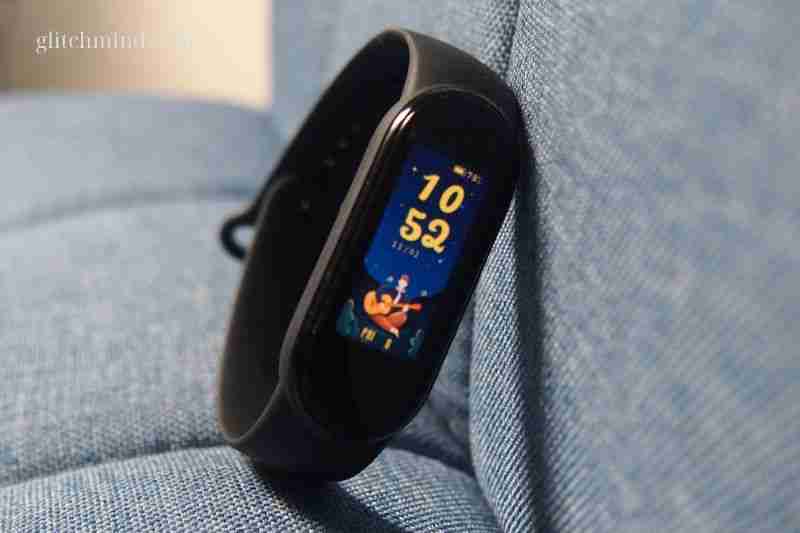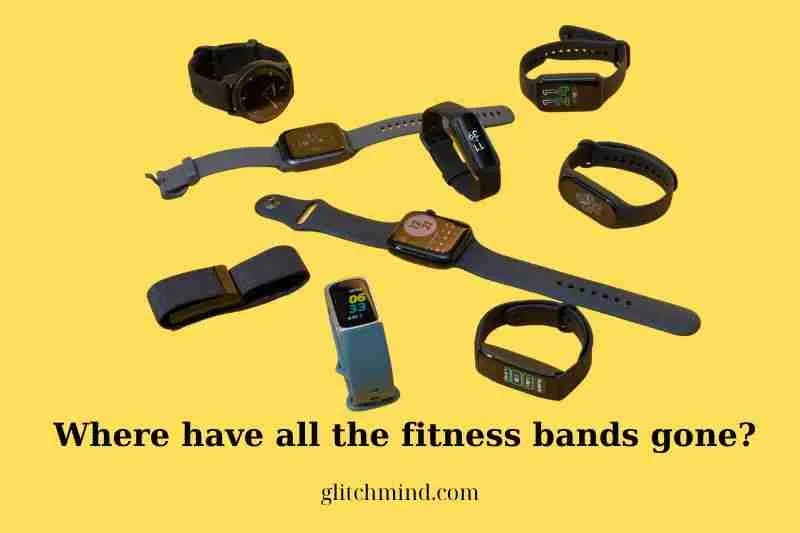In recent years, a noticeable shift has occurred in the wearables market, sparking the question: Where have all the fitness bands gone? Once the hallmark of personal wellness tracking, fitness bands have seemingly diminished in popularity, giving way to a variety of other devices and trends.
Yet, this decline is not merely a fading fad but a nuanced evolution fueled by technological advancements, market forces, and consumer preferences.
This article aims to delve into the various factors contributing to this change and to explore what the future may hold for fitness bands as they compete or integrate with other health-monitoring technologies.
Types of Wearables
To narrow down your options, it’s first important to understand there are four main types of wearables to choose from: fitness trackers, GPS watches, smartwatches, and standalone heart rate monitors.
Fitness trackers focus on recording your steps, heart rate, stress levels, sleep, and more. Many will also have the option to track workouts, but may not offer as much in-depth data as, say, a GPS watch.
If you’re mainly interested in monitoring your overall wellness, fitness trackers might be a good option for you. Since these are usually a bit sleeker and more lightweight than some of the higher-tech wearables, they’re also a good fit for everyday wear.
GPS watches are generally geared toward runners, swimmers, cyclists, and other types of athletes who want in-depth data to help them optimally train.
Many still have similar basic features as the fitness trackers—say, they also track steps, sleep, and heart rate, for instance—but because they use GPS tracking, they can provide more accurate metrics for pace and distance.
High end models may even offer maps, workout suggestions, and training feedback. These are often pricier and bulkier than fitness trackers, but they also tend to be more durable and precise.
Smartwatches are similar to fitness trackers, but their main difference is that they also have third-party app capabilities and syncing abilities with your smartphone for calling and texting. Some also have built-in GPS, too.
Standalone heart rate monitors come either as a wrist or arm band, or as a chest strap. Most GPS watches and fitness wearables already have a wrist-based tracker, but some people opt to pair a chest strap with a watch if they are looking for the most accurate reading.
The chest straps can be useful for those who practice heart rate based training such as interval workouts or effort-based run training.
![]()
Fitness tracker layers: what’s inside the method
Let’s delve into the technology that powers these health-tracking devices. Now, fitness tracking gadgets consist of multiple layers, each owing its specific detectors and functions. Understanding these will give you a better grasp of how the devices work together to empower us with valuable health insights.
1. Sensing Layer: The core of every tracker is its sensing layer collecting a whole volume of data about our body and movements. The layer often includes speed sensors, heart rate monitors, temperature detectors, being a fitness tracker constant observers, saving your beats, steps, and breath.
2. MAC Layer: Just like how communication between devices requires rules and protocols, this layer manages access to the network of sensors and controls the timing and order of data transmissions.
3. Network Layer: Think of the network layer as the bridge connecting your fitness tracker to a smartphone or computer, handling the transmission of data from the wearable to a chosen platform, dedicated fitness app or a cloud-based service. Here comes the GPS functionality, as well, allowing your tracker to map your routing and follow positioning.
4. Processing and Storage Layer embodies the collected data. Equipped with a small yet powerful computer that operates the raw data from the detectors, it converts numbers and parameters into meaningful health grasps, such as step and heart rate counts, trends, and sleep.
5. Service Layer: The service layer is the gateway to a world of features and functions. With it, you operate goals, visualize stats, receive notifications, access other relevant services. It’s the interface that empowers you to make informed decisions.
In essence, your fitness tracker operates seamlessly across these layers, transforming data into actionable information that empowers you to lead a healthier lifestyle.
The sensors capture, the MAC layer organizes, the network layer communicates, the processing and storage layer analyzes, and the service layer presents it all to you in an accessible and user-friendly manner.
![]()
Why fitness trackers are invaluable for busy individuals
In today’s fast-paced world, finding time for health and fitness can be challenging. This is where fitness trackers step in, offering a lifeline for your hectic schedule, altogether giving a hand to maintain your fit. Here’s how they can make a significant impact:
Efficient time management: Hard-workers often struggle to allocate time for exercise. Fitness bands help optimize workouts by providing real-time data on steps taken, calories burned, and heart rate. This ensures that every minute of exercise counts, making the most of limited free time.
Goal setting and motivation: For many, setting fitness goals can be daunting. Fitness trackers simplify this process by allowing users to establish achievable targets, such as a daily step count or calorie burn. These devices then provide continuous feedback and motivation to help users stay on track, even during packed workdays.
Customized workouts: Fitness tracking gadgets can recommend personalized workout routines based on an individual’s goals and fitness level. This tailoring ensures that workouts are efficient and effective, catering to specific needs without requiring extensive planning.
Data-driven progress: Women focused on fitness and weight management can benefit immensely from the detailed data fitness trackers provide. These devices track changes in weight, body composition, and activity levels over time, allowing users to adjust their routines and dietary choices accordingly.
Watching over health: Beyond physical activity, fitness trackers often include features for monitoring sleep patterns and stress levels. These aspects are vital for maintaining overall health, particularly for women balancing work, family, and fitness goals.
Convenience: Fitness trackers are wearable and discreet, fitting seamlessly into any daily routine. Their convenience encourages consistent use, ensuring that users stay engaged with their health and fitness objectives.
Designed to enhance our health and fitness journey, the final step is to find the perfect fitness bracelet for your needs. Here are some key considerations to keep in mind:
Compatibility: Ensure that the health-tracking device you choose is consistent with your smartphone’s operating system. Most trackers are coherent with dedicated mobile apps to produce an all-embracing outlook of your health data.
Battery Life: Check the battery endurance to guarantee it meets your requirements. Some tracking gadgets stay long on one load, while others may require more frequent charging.
Interface and Convenience: Wearing a fitness band daily, one that’s comfortable and suits your style is best choice.
Water Resistance: If you plan to use your tracker during water-based exercises, opt for a model with water resistance to avoid damage.
Budget: Fitness trackers come in various price ranges, so set a budget that aligns with your financial constraints.
Features: Consider the specific features that matter most to you, whether it’s GPS, heart rate monitoring, sleep tracking, or specialized sensors.

Where have all the fitness bands gone?
As a technology expert with a focus on smartwatches, I’ve observed some fascinating shifts in the wearables landscape. Fitness bands, once the go-to devices for basic health and activity tracking, have faced several market forces that account for their decreased visibility.
Rise of the Smartwatch: One of the most compelling shifts has been the increasing adoption of smartwatches, which not only offer sophisticated fitness tracking capabilities but also provide a multitude of other functionalities—like messaging, calling, and third-party apps.
Brands like Apple, Samsung, and Garmin have incorporated high-level fitness tracking into their smartwatches, making separate fitness bands less appealing to many consumers.
Market Consolidation: Over the years, the fitness band market has concentrated around major players like Fitbit, Xiaomi, and Garmin. This consolidation has made it difficult for smaller and less-known brands to sustain themselves, leading to their gradual exit from the market.
Feature Inflation: Even basic fitness bands today offer features that were once premium, such as heart rate monitoring and GPS capabilities. This has led to fewer ‘entry-level’ options, pushing consumers toward more feature-rich (and often more expensive) devices, including smartwatches.
Specialized Devices: Another development is the proliferation of specialized fitness tracking devices designed for particular sports or activities, like GPS watches for runners or cycling computers. These specialized devices have taken a share of the market that was once dominated by general-purpose fitness bands.
Integrated Technology: Today, fitness tracking capabilities are being seamlessly integrated into other lifestyle products, including eyewear, clothing, and even jewelry. This ‘invisible tech’ offers a more aesthetic and less obtrusive alternative to traditional fitness bands.
Smartphone Capabilities: Modern smartphones have increasingly sophisticated built-in sensors and health applications, making basic activity and fitness tracking accessible without the need for a separate device.
As someone who specializes in smartwatch technology, Glitchmind sees these trends not as the end of fitness bands, but as their evolution.
They are being subsumed into a larger ecosystem of wearables and health tech, offering consumers more choices but also creating challenges for manufacturers to differentiate themselves in a crowded market.
